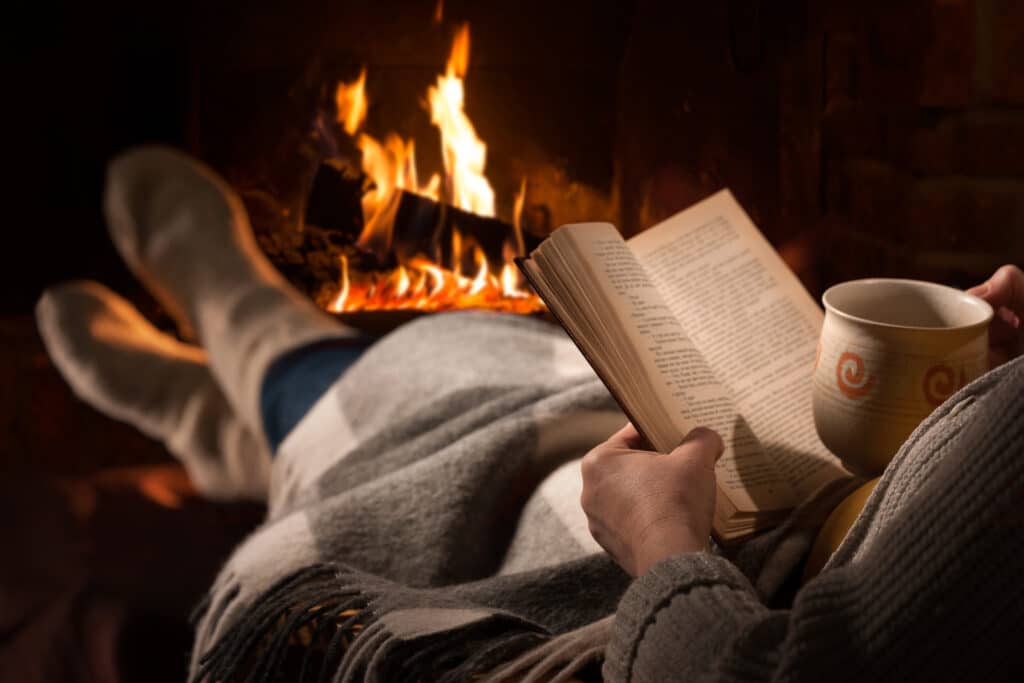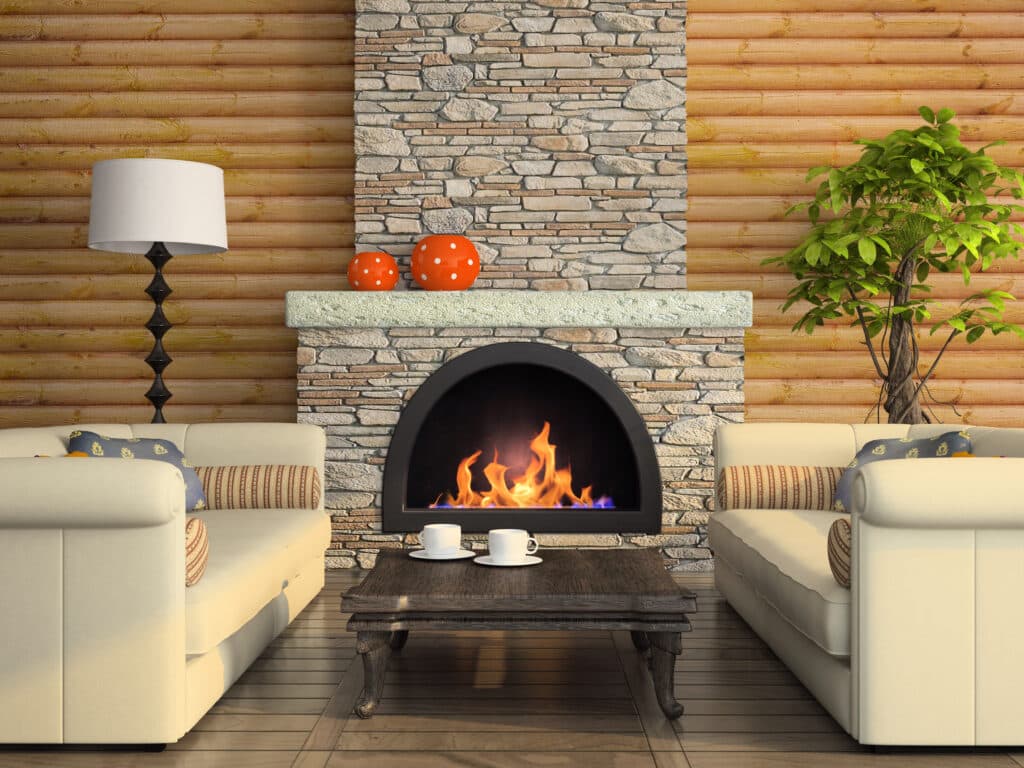Cleaning out your fireplace is no picnic, and depending on your fuel source requires a different approach. Prepare for the cooler months with these few suggestions.

The Year’s Last Loveliest Smile
Is there anything more deliciously cozy than curling up in front of the fireplace with a good book and cup of hot chocolate as damp golden leaves make their final descent to the ground outside? The soothingly warm flames promise protection as the air outside turns cool and whisper the promise of the coming winter.
We love fall, okay?
The only problem with this picturesque scene is that, eventually, that fireplace will need to be cleaned out. There’s something about fire that has to leave its mark, and often that means an ashy and sooty mess is left behind. Cleaning out your fireplace doesn’t always invoke the same charm as watching the embers dance in its confines, but the more regularly you do it, the easier the job will be.
Is Cleaning Out Your Fireplace Necessary?
The byproducts of fire include noxious gasses and other particulate matter (speaking of charming). This is true whether you are burning wood or natural gas, kerosene or coal. If these are left to themselves, or worse, burned again, they can cause dark stains within the fireplace and on the surrounding hearth and mantle. The longer you postpone cleaning out your fireplace, the more invested you will need to be, since more time and use allows for more buildup.
While it’s true that cleaning out your fireplace that burns wood is a more obviously involved project since it requires sweeping out soot and ash on top of everything else, electric and gas fireplaces still need to be cleaned regularly to look their best. We have some suggestions no matter what kind of fireplace you own.

Gas
The most common side effect of burning gas in a fireplace is a foggy or white film that forms on the unit’s glass doors. This product of chemicals in the gas can be removed with glass cleaner applied with paper towels. Particularly tricky gunk may require fireplace-specific glass cleaners.
Before you do any cleaning, make sure to turn off the gas valve and let the unit’s burners cool completely for your own safety. Once the unit is cool and disconnected from the gas source, you should also vacuum out and dust any faux logs and the interior of the fireplace box.
Electric
Electric fireplaces should require less cleaning since they only use an electric heater to warm the surrounding air. Still, remember safety first. Turn off the unit before you vacuum out or dust the interior and exterior of the fireplace. When the unit has completely cooled, you can use a duster or damp cloth to wipe down the fireplace’s walls inside and out. If your unit is encased in glass, use a glass cleaner for a polished look. Always review the manufacturer’s instructions before attempting to clean an electric fireplace.
Wood
There’s nothing like the comfort of a wood-burning fireplace. Unfortunately, there is also no messier fireplace as the burning wood converts into ash, soot, and creosote. You’ll want to protect the other elements of the room before you start cleaning a wood-burning fireplace. Cover nearby furniture and flooring with tarping.
Wait at least 24 hours after the fireplace has been used to clean it. During the wait, spread out the embers with a shovel and cover them with baking soda. After the allotted time, remove any logs and the grate and andirons, knocking off as much debris and ash as possible into the garbage. Sweep out the fireplace with a broom and dust pan. If ash and soot volumes are low, you may use a vacuum hose.
The next step is to thoroughly scrub the inside of your fireplace. We recommend a combination of warm water, heavy-duty cleaner, and dish soap applied with a stiff-bristled brush. Work from the top down and don’t hold back. Clean the surrounding hearth and mantle in the way best suited to their construction, i.e. apply dish soap with a pumice stone to clean hearth brick and use glass cleaner to clean glass doors. Be sure to let your fireplace dry completely before you use it again.

The National Fire Protection Association recommends that fireplaces, chimneys, vents, and flues be cleaned and inspected at least once a year. Late summer or early autumn is the best time to complete the task and beat both heat and chill. In the months you don’t use your fireplace, frequent dusting will help to keep the surrounding area clean and safe.
Get ready to get cozy this fall by cleaning out your fireplace early. If you do so, you can enjoy crisp autumn evenings with the knowledge that your fireplace is safe and ready to keep you warm all winter.
